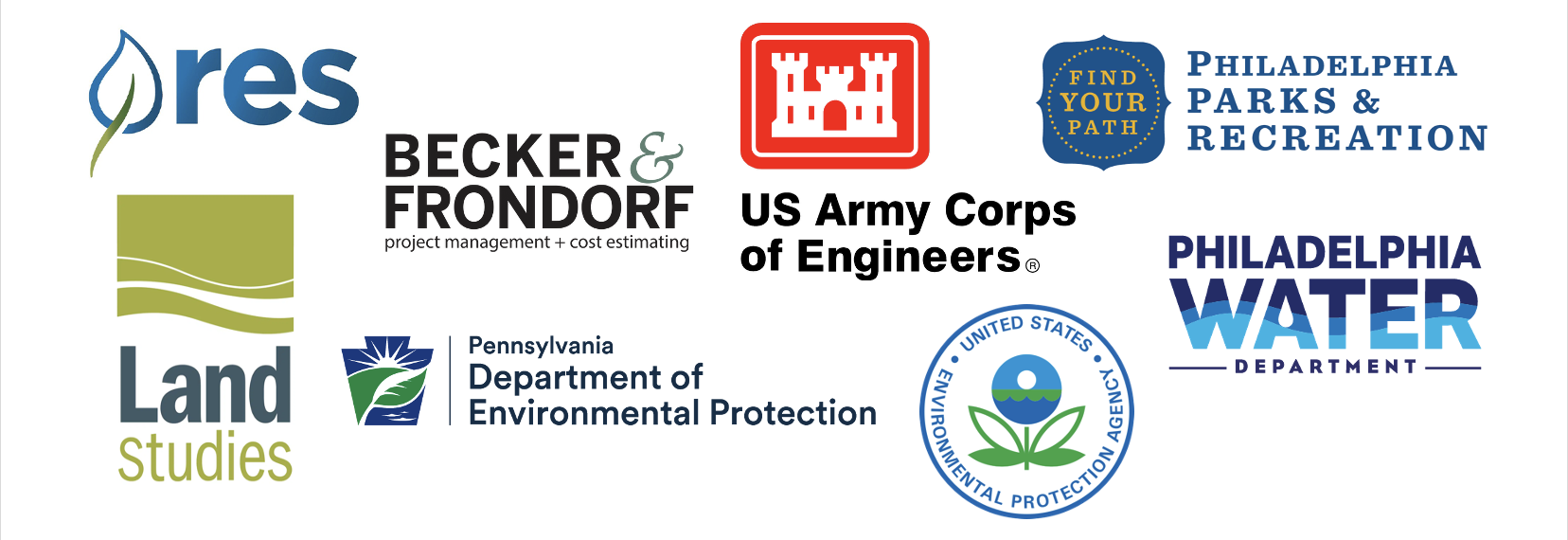RENEWING
GREEN SPACES
Our Commitment to Our Land
We approached our work—revitalizing Cobbs Creek Golf Course and establishing a true campus of education and community engagement—knowing that, first and foremost, we must embrace our responsibilities as stewards of these 350 acres. Years of neglect had only exacerbated historical environmental challenges centered around Cobbs Creek, the body of water. The surrounding communities have been suffering from flooding, poor water quality, and related public health concerns. We are determined to take action and forge partnerships that will restore the Creek, add important wetlands, and create one of our region’s preeminent green spaces.

A Visionary Project
From the reservoir we opened in 2024, which has given us water independence to the environmental lessons taking place in the Smilow | Woodland TGR Learning Lab, we’re transforming Cobbs Creek’s 350 acres into vibrant places where community and nature thrive side by side. You’re invited to join us as we engage in the largest ever urban creek restoration, restore the natural hydrologic function across our floodplain, add wetlands, remove contaminated legacy sediment, and more much.
200,000+
cubic yards of legacy, pollutant-contaminated sediment removed
25+
acres of new wetlands created and protected
3 miles
of waterway restored
Who Benefits from Environmental Remediation?
A head-turning graphic we created applying data from the U.S. Environmental Protection Agency begins to show how many disadvantaged communities will benefit from our green work.
“One of the largest true process-based stream restoration projects (not an engineered system) in a mega-urban environment in the country.... Truly exceptional in size and quality for a large city and will be a showcase for what can be done to restore urban environments.”
PENNSYLVANIA DEPARTMENT OF ENVIRONMENTAL PROTECTION (DEP)
22+ tons
of Total Nitrogen removed annually
Generations of Impact
Our restoration efforts focus on three phases: the work that has gone on spring and summer 2025 on erosion and sediment control and early habitat enhancement; large-scale earthwork that will regrade the floodplain and build an infrastructure for stormwater; and a final, crucial set of projects: the channel restoration for the creek, establishment of new wetlands, and complete reforestation and replanting. All of this work will be complete before summer 2027. Careful planning and expert partnerships will ensure this work benefits future generations—providing safe and open green spaces and safeguarding the health of communities downstream.
Some of Our Environmental Partners
To undertake and complete the largest ever urban creek restoration, spanning three miles, we will excavate 215,680 cubic yards of contaminated legacy sediment and permanently remove 133,680 cubic yards. In this way, we can re-establish natural hydrologic function, while mitigating historic flooding and channel degradation. We are also addressing major public health challenges for more than 200,000 individuals in the Philadelphia area by directly managing discharges from 28 Combined Sewage Overflows (CSOs) and a former Superfund site. Our work will also enhance 1.2 acres of existing wetlands, primarily by planting native species and removing invasive species, and we will establish 23.94 acres of new wetlands, making the Cobbs Creek Campus one of the most biodiverse areas in our region.
Implementing the Best Solutions
The Power of Green Spaces
Green spaces lead to more than better outcomes for individuals, whose mental and physical health flourish because of access to these beneficial areas, especially early in life. Green spaces ultimately impact our entire region in bigger ways. For example, they dissipate the “urban heat island effect,” reducing temperatures by up to 22°F. They can also play crucial roles in decreasing flooding, increasing the urban tree canopy, and improving public health. Together, we’re turning our 350 acres into a powerful force for positive change.






